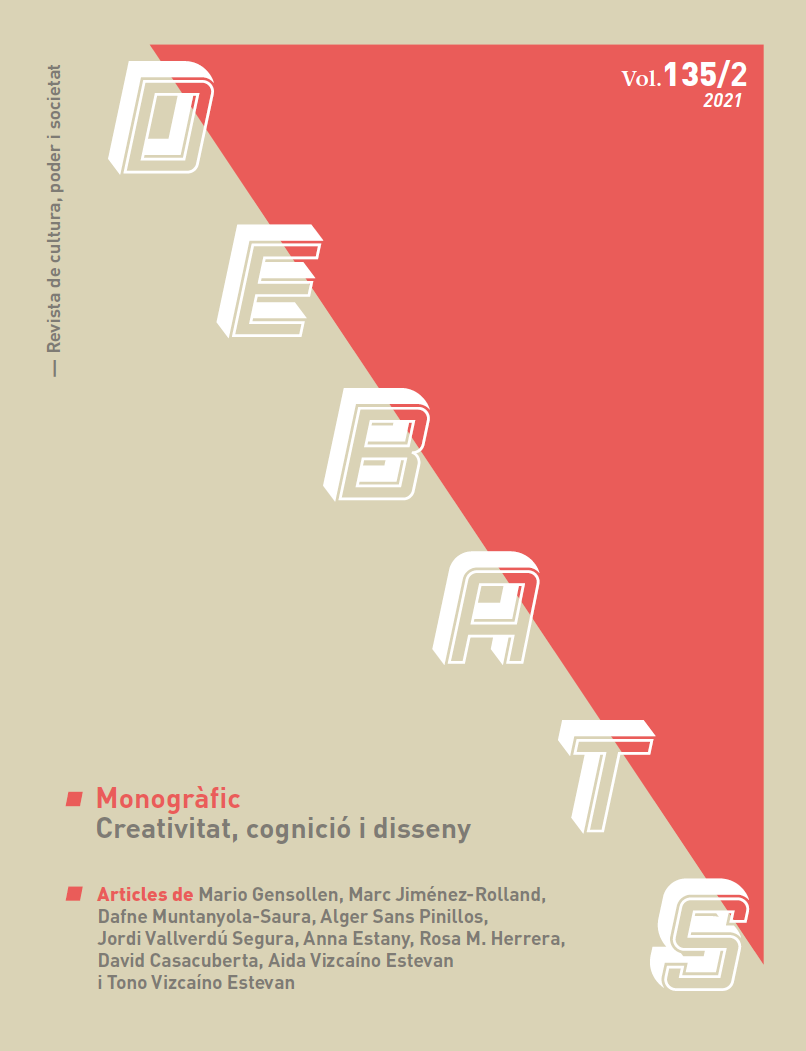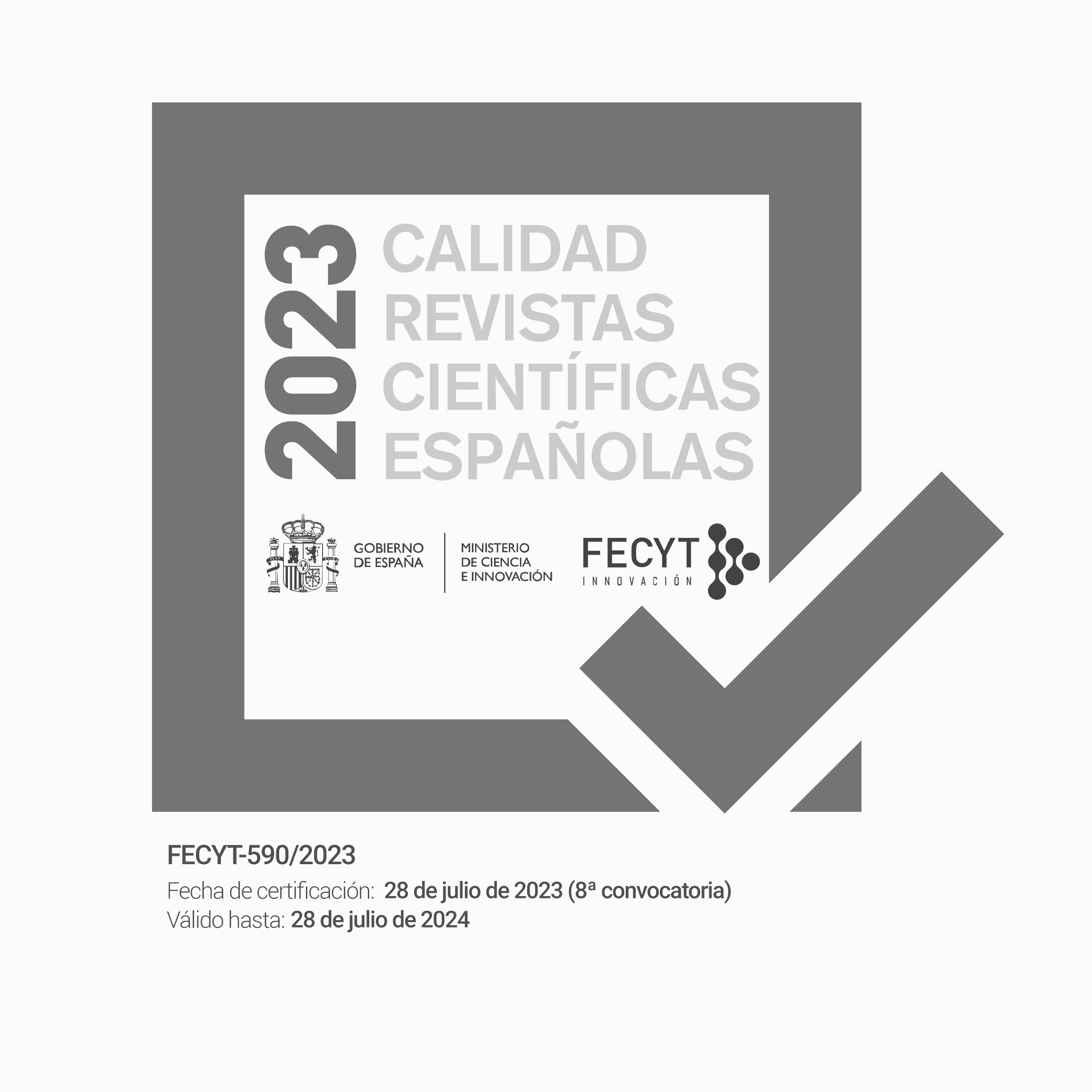Naturalist Methods in the Sociology of Creation: The Case Against Reductionism
DOI:
https://doi.org/10.28939/iam.debats-135-2.2Keywords:
sociologia de la cultura, legitimitat, gust, etnometodologia, Lizardo, Bourdieu.Abstract
The Sociology of Culture has much to say when it comes to the ever-changing general consensus on what constitutes legitimate culture and definitions of creativity. The naturalistic studies on cognition in social and cognitive sciences show this empirically (Bourdieu, 1979: Becker, 1982, 2002; Sennett, 2012; Author, 2014). Creative cognition is part of an institutional context. However, the influential culturalist branch of cognitive sociology (CCS) reduces creativity to a cognitivist psychological level (Lizardo and
Strand, 2010). We start from the conjecture that the Sociology of Culture can draw on the naturalistic paradigm of cognition to explain creativity without falling into reductionist or atomist positions. The authors take the diversity of theoretical-empirical proposals into account in identifying the starting points for focusing the debate at both the macro and micro levels. The body of the article comprises a literature review which, while not exhaustive, offers a full picture of the pragmatic and integrated models of creativity. The studies analysed present inter-subjective processes of creation and the transmission of variable legitimate criteria concerning cultural consumption such as categorisations, evaluations and aesthetic judgments. The sociological perspective offers scope for strengthening critical tools for examining creativity
Downloads
References
Alac, M. (2017). We like to talk about smell: A worldly take on language, sensory experience, and the Internet, Semiotica, 215: 143–192
Armstrong V (2011) Technology and the Gendering of Music Education. Farnham: Ashgate.
Ariño, A. i Llopis, R. (2017). Culturas en tránsito. Madrid: Fundación SGAE.
Autora (2014).
Becker, H. (1982). Art worlds. Berkeley: Berkeley University Press.
Becker, H. (2002). Studying the New Media. Qualitative Sociology , 25-3, 337-343.
Berger, P. i Luckmann, T. (1988). La construcció social de la realitat. Barcelona: Herder.
Bourdieu, P. (1979). La distinction. Paris: Seuil.
Bourdieu, B. (1984) Raisons Practiques. Paris: Seuil.
Bourdieu, B. (1994). Les regles de l'art. Paris: Seuil.
Brekhus, W. H. (2015). Culture and Cognition. Patterns in the Social Construction of Reality. Cambridge UK: Polity Press.
Bunge, M. (2018). Diccionari filosòfic. Barcelona: Institut d'Estudis Catalans (IEC).
Bryson, B. (1996). "Anything But Heavy Metal": Symbolic Exclusion and Musical Dislikes, American Sociological Review, 61 (5) 884-899.
Clark, Andy. (2008). Supersizing the mind. Oxford, UK: Oxford University Press.
Cicourel, A. (2002). The Interaction of Discourse, Cognition and Culture. Discourse Studies, 8 (1), 25-29.
Cifariello, F. (2017). "Creativitá musicale di consumo" en Fele, G.,Russo, M.,Cifariello, F. (Eds.) Creativitá musicali. Narrazioni, practiche e mercato. Milano: Mimesis.
Damasio, A. (1999). The Feeling of What Happens: Body and Emotion in the Making of Consciousness: New York: Harcourt Brace.
DelVal, F. (2017) Rockeros insurgentes, modernos complacientes: un análisis sociológico del rock en la Transición (1975-1985). Madrid: Fundación SGAE.
DeNora, T. (2014). Making Sense of Reality: Culture and Perception in Everyday Life. London: Sage.
Dennett, D. (1995). Darwin’s dangerous idea. New York: Simon & Schuster.
DiMaggio, P. (1987). Classification in Art, American Sociological Review, 52,4,: 440-455.
Dreyfus, H. (1996). The current relevance of Merleau-Ponty’s phenomenology of embodiment. The Electronic Journal of Analytic Philosophy, 4.
Du Gay P (1997) Doing Cultural Studies: The Story of the Sony Walkman. London: Sage/Open University Press.
Eagleton, T. (2000). The idea of culture. London: Blackwell Publishing.
Fele, G. (2016). Il paradosso del gusto. Societàmutamentopolitica, 7 (14): 151-174.
Frith, S. (1986). Art versus technology: The strange case of popular music. Media, Culture & Society, 8: 263–279.
Fourcade, M. (2012). The Vile and the Noble: On the Relation between Natural and Social Classifications in the French Wine World. Sociological Quarterly, 53 (4), 524-545.
Gamboni, D. (2007). La destrucción del arte. Iconoclasia y vandalismo desde la Revolución Francesa. Madrid: Cátedra.
Gallese, V., C. Keysers, i G. Rizzolatti (2004). A unifying view of the basis of social cognition, in Trends in Cognitive Science, 8: 396–403.
Gibbs, R. (2006). Embodiment and cognitive science. New York, NY: Cambridge
University Press.
Green, B. (2016). I Always Remember That Moment’: Peak Music Experiences as Epiphanies. Sociology, 50(2) 333–348.
Heinich, N. (1999) La sociologie et les publics de l'art en Moulin, R. (op.cit)
Hennion, A. (2005). Pragmatics of Taste. In Jacobs M. & Hanranhan, N. The Blackwell Companion to the Sociology of Culture, Oxford, Blackwell, pp.131-144.
Herrera-Usagre, M. (2011). El consumo cultural en España. Una aproximación al análisis de la estratificación social de los consumos culturales y sus dificultades metodológicas. Empíria, Revista de Metodología de Ciencias Sociales, 22: 141-172.
Johnson, C; Dowd, T. & Ridgeway, C. (2006), Legitimacy as a Social Process, Annual Review of Sociology, 32: 53-78.
Jacobi, D. i Luckerhoff, J. (2012). Looking for non-publics. Presses de l'Université du Québec.
Kirsh, D. (2009). Projection, Problem Space and Anchoring. In N. A. Taatgen & H. van Rijn (Eds.), Proceedings of the 31st Annual Conference of the Cognitive Science Society (pp. 2310-2315). Austin, TX: Cognitive Science Society.
Lamont, M. (2010). Looking back at Bourdieu. In E. B. Silva, & A. Warde (Eds.), Cultural analysis and Bourdieu’s legacy: settling accounts and developing alternatives (pp. 128–141).London: Routledge.
Latour, B. (1986).Visualisation and Cognition: Thinking with Eyes and Hands. In H. Kuklick (ed.) Knowledge and Society Studies in the Sociology of Culture Past and Present , Jai Press 6: 1-40.
Lena, JC, & Peterson, RA (2008). Clasificación as Culture: Types and Trajectories of Music Génders. American Sociological Review, 73 (5), 697-718.
Lieberman,K. (2013). MORE Studies in Ethnomethodology: studies of the in vivo organization of sense. State University of New York Press.
Lipovetsky, G. (2007). Le bonheur paradoxal. Essai sur la société d'hyperconsommatiom. Paris: Gallimard.
Lizardo, O. (2004). “Mirror Neurons,” Collective Objects and the Problem of Transmission: Reconsidering Stephen Turner’s Critique of Practice Theory, Journal for the Theory of Social Behaviour, 37:3, 219-350.
Lizardo, O. & Strand, M. (2010). Skills, toolkits, contexts and institutions: Clarifying the relationship between different approaches to cognition in cultural sociology. Poetics, 38: 204–227.
López Sintas, J.L.; Filimon, N., Cebollada, A. Filimon , N & Gharhaman, A. (2014) Music access patterns: A social interpretation. Poetics 46: 56–74.
Mas, X. (2017) La música clàssica contemporània: una perspectiva etnomusicològica. Tesi doctoral de sociologia, Universitat de València.
Moschetta, P.H. y Vieira, J.S. (2018) "Music consumption in the streaming era: Music curation practices in Spotify", Congreso KISMIF 2018: Gender Differences, Identities and DIY Cultures Universidad de Porto, 2-3 Julio.
Moulin, R. (Ed.) (1999) Sociologie de l'art. Paris: L'Harmattan.
Premack, D. (2004). Is Language the Key to Human Intelligence? Science 303, 318-320.
Ramachandran,Vilanayur S. i Blackeslee, Sandra (1999). Phantoms in the Brain: Probing the Mysteries of the Human Mind. NewYork: William Morrow.
Regev, M. (2013). Pop-rock Music. Aesthetic Cosmopolitanism in Late Modernity. Cambridge UP.
Rendueles, C. (2013).Sociofobia. El cambio político en la era de la utopía digital. Madrid: Capitán Swing.
Rosenblum, B. (1999) Artists, Alienation and the Market in Moulin (op cit).
Searle, J. (2004). Mind. Oxford University Press.
Sennet, R. (2012). Together. London: Penguin Books.
Schütz, A. (1972). Collected Papers vol. I. The Netherlands: Springer.
Stuart Hall, E. (2007). Richard Hoggart, The Uses of Literacy and the cultural turn. International Journal of Cultural Studies, 10(1): 39–49.
Stuart Hall, E. & Jefferson, T. (eds) (1998 [1975]). Resistance Through Rituals: Youth Subculturas in Post-war Britain. London New York: Routledge.
Teil, G. (2004). De la coupe aux lèvres. Pratiques de la perception et mise en marche des vins de qualité. Toulouse: Éditions Octarès.
Vandenberg et al (2018) "Taste patterns of the 'illegitimate' cultural consumer", Congreso KISMIF 2018: Gender Differences, Identities and DIY Cultures Universidad de Porto, 2-3 Julio.
Vlegelsa, J. & Lievens, (2017). Music classification, genres, and taste patterns: A ground-up network analysis on the clustering of artist preferences Poetics 60: 76–89.
Williams, R. (1992 [1958]). Culture and Society. Londres: The Hogarth Press
Downloads
Published
How to Cite
Issue
Section
License
Without prejudice to the provisions of article 52 of Spanish Law 22/1987 of November 11 on Intellectual Property, BOE (official state bulletin) of November 17, 1987, and pursuant to said legislation, the author(s) surrender(s) free of charge its rights of edition, publication, distribution and sale of the article, for its publication in Debats. Journal on Culture, Power and Society.
Debats. Journal on Culture, Power and Society is published under the Creative Commons license system in accordance with the «Recognition - Non-Commercial (by-nc) modality: The generation of derivative works is permitted provided that commercial use is not made. Nor can the original work be used for commercial purposes».
Thus, when the author submits his/her contribution, he/she explicitly accepts this assignment of publishing and publishing rights. Authors also authorize Debats. Journal on Culture, Power and Society to include their work in an issue of the journal to be distributed and sold.











